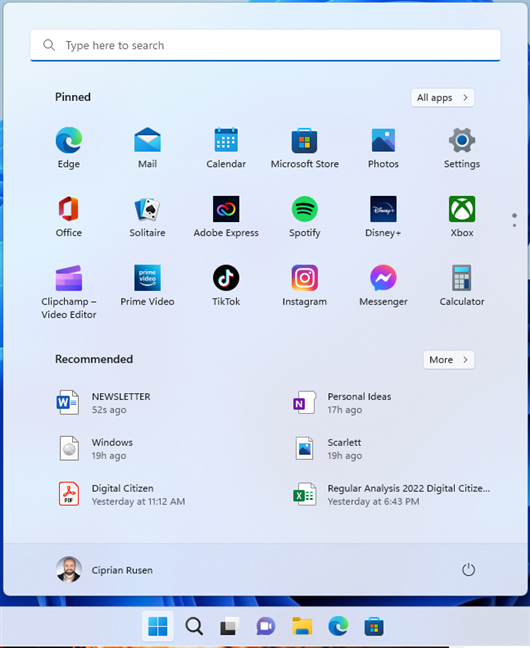KPIs, Tools, and Best Practices

The Software-Defined Wide Area Network (SD-WAN) has emerged as a transformative technology for enterprises seeking to optimize their network performance, reduce costs, and enhance agility. As organizations increasingly rely on cloud-based applications and services, the need for a robust, flexible, and high-performing WAN infrastructure has become paramount.
SD-WAN addresses these needs by decoupling the network control plane from the data plane, enabling centralized management, and leveraging multiple connection types (e.g., MPLS, broadband, LTE) to ensure optimal application performance.
The effectiveness of an SD-WAN solution hinges on its ability to deliver consistent performance across diverse network conditions. To evaluate and ensure the performance of SD-WAN services, organizations must monitor a set of Key Performance Indicators (KPIs). These KPIs provide insights into the health, efficiency, and reliability of the SD-WAN infrastructure. Specialized software tools are available to monitor these metrics, enabling network administrators to proactively identify and address performance issues.
This article explores the critical performance metrics for evaluating SD-WAN services, the importance of each KPI, and the software tools available for monitoring these metrics.
Key Performance Indicators (KPIs) for SD-WAN
The SD-WAN concept provides a network, and the performance indicators that you look for in such a system are going to be exactly those that you would seek to track in any network.
1. Latency
Latency refers to the time it takes for a data packet to travel from its source to its destination. High latency can significantly impact the performance of real-time applications such as VoIP, video conferencing, and online gaming.
- Importance: Low latency is critical for ensuring a seamless user experience, particularly for latency-sensitive applications. SD-WAN solutions often use path selection algorithms to route traffic through the lowest-latency paths.
- Measurement: Latency is typically measured in milliseconds (ms). Tools like ping and traceroute can provide basic latency measurements, but SD-WAN monitoring tools offer more granular insights.
2. Jitter
Jitter is the variation in latency over time. It is particularly important for real-time applications, where inconsistent packet arrival times can lead to poor audio or video quality.
- Importance: High jitter can cause packet loss and degrade the quality of real-time communications. SD-WAN solutions often include jitter buffers to mitigate its impact.
- Measurement: Jitter is measured in milliseconds (ms). Monitoring tools can track jitter over time and alert administrators to abnormal variations.
3. Packet Loss
Packet loss occurs when data packets fail to reach their destination. This can be caused by network congestion, hardware failures, or poor-quality connections.
- Importance: Excessive packet loss can disrupt application performance and lead to retransmissions, increasing latency and reducing throughput.
- Measurement: Packet loss is expressed as a percentage of total packets sent. SD-WAN monitoring tools can identify patterns of packet loss and correlate them with specific network paths or devices.
4. Throughput
Throughput refers to the amount of data successfully transmitted over the network in a given time period. It is a measure of the network’s capacity to handle data traffic.
- Importance: High throughput is essential for supporting bandwidth-intensive applications such as video streaming, large file transfers, and cloud backups.
- Measurement: Throughput is typically measured in bits per second (bps), kilobits per second (Kbps), or megabits per second (Mbps). Monitoring tools can provide real-time and historical throughput data.
5. Availability
Availability measures the uptime of the SD-WAN infrastructure and its ability to maintain connectivity. It is often expressed as a percentage of total operational time.
- Importance: High availability is critical for ensuring business continuity and minimizing downtime. SD-WAN solutions frequently include failover mechanisms to maintain connectivity in the event of a link failure.
- Measurement: Availability is calculated as (Total Operational Time – Downtime) / Total Operational Time * 100. Monitoring tools can track uptime and generate alerts for outages.
6. Quality of Service (QoS)
QoS refers to the ability of the network to prioritize certain types of traffic based on predefined policies. This ensures that critical applications receive the necessary bandwidth and low latency.
- Importance: Effective QoS policies are essential for optimizing application performance and ensuring that mission-critical traffic is prioritized over less important traffic.
- Measurement: QoS metrics include bandwidth allocation, packet prioritization, and compliance with service level agreements (SLAs). Monitoring tools can assess the effectiveness of QoS policies and identify areas for improvement.
7. Application Performance
Application performance metrics measure how well specific applications are performing over the SD-WAN. This includes metrics such as response time, transaction completion rates, and user satisfaction.
- Importance: Monitoring application performance helps organizations ensure that their SD-WAN is delivering the expected benefits for key applications.
- Measurement: Application performance can be measured using synthetic transactions, real-user monitoring (RUM), and application-aware network performance monitoring tools.
8. Link Utilization
Link utilization measures the percentage of available bandwidth that is being used on a given network link. High utilization can indicate congestion and potential performance issues.
- Importance: Monitoring link utilization helps organizations optimize their network resources and avoid bottlenecks.
- Measurement: Link utilization is expressed as a percentage of total available bandwidth. Monitoring tools can provide real-time and historical utilization data.
9. Path Selection Efficiency
Path selection efficiency evaluates how effectively the SD-WAN solution routes traffic across available paths to optimize performance and reliability.
- Importance: Efficient path selection is a core feature of SD-WAN, enabling dynamic routing based on real-time network conditions.
- Measurement: Metrics include the number of path changes, the criteria used for path selection, and the impact on application performance.
10. Security Metrics
Security metrics assess the effectiveness of the SD-WAN’s built-in security features, such as encryption, firewalls, and intrusion detection systems.
- Importance: As SD-WAN extends the network edge, ensuring robust security is critical for protecting sensitive data and preventing cyberattacks.
- Measurement: Security metrics include encryption strength, threat detection rates, and compliance with security policies.
Software for Monitoring SD-WAN Performance Metrics
To effectively monitor and analyze SD-WAN performance metrics, organizations can leverage specialized software tools. These tools provide real-time visibility, historical data, and actionable insights to optimize SD-WAN performance. Below are some popular SD-WAN monitoring solutions:
1. ManageEngine OpManager
ManageEngine OpManager is a comprehensive network monitoring tool that supports SD-WAN performance monitoring. The platform provides real-time insights into network health, performance, and availability, enabling organizations to optimize their SD-WAN deployments. OpManager is designed to be easy to use, making it an excellent choice for organizations of all sizes.
One of the key features of ManageEngine OpManager is its ability to monitor key performance metrics such as latency, jitter, packet loss, and throughput in real time. The platform also offers customizable dashboards and reports, making it easy to track performance trends and compliance with SLAs. OpManager’s automated alerts and notifications ensure that organizations stay informed about performance issues.
ManageEngine OpManager supports multi-vendor SD-WAN environments, providing flexibility for organizations with diverse network infrastructures. The platform’s integration with other ManageEngine tools enhances its capabilities, providing a unified approach to network performance management. By leveraging ManageEngine OpManager, organizations can achieve greater visibility, control, and optimization of their SD-WAN infrastructure.
2. PRTG Network Monitor
PRTG Network Monitor is a versatile network monitoring tool that supports SD-WAN performance monitoring. The platform offers a wide range of sensors for tracking network metrics, providing real-time visibility into network health and performance. PRTG Network Monitor is designed to be easy to use, making it an excellent choice for organizations of all sizes.
One of the key features of PRTG Network Monitor is its ability to monitor key performance metrics such as latency, jitter, packet loss, and throughput. The platform also offers bandwidth and throughput analysis, enabling organizations to optimize their network resources and avoid bottlenecks. PRTG Network Monitor’s customizable alerts and notifications make it easy to stay informed about performance issues.
PRTG Network Monitor supports multiple SD-WAN vendors, providing flexibility for organizations with diverse network environments. The platform’s customizable dashboards and reports make it easy to track performance trends and compliance with SLAs. By leveraging PRTG Network Monitor, organizations can achieve greater visibility, control, and optimization of their SD-WAN infrastructure.
3. Riverbed SteelHead
Riverbed SteelHead is a performance management platform that supports SD-WAN monitoring, providing insights into network performance, application performance, and user experience. The platform is designed to help organizations optimize their SD-WAN deployments by offering real-time and historical performance data. SteelHead integrates seamlessly with Riverbed SD-WAN solutions, providing a comprehensive monitoring and management solution.
One of the key features of Riverbed SteelHead is its application-aware network performance monitoring capability. This allows organizations to monitor the performance of specific applications over the SD-WAN, ensuring that critical applications receive the necessary resources and prioritization. The platform also offers user experience monitoring, enabling organizations to proactively identify and address issues that may impact end users.
Riverbed SteelHead provides customizable alerts and reports, making it easy to track performance trends and compliance with SLAs. The platform’s integration with other Riverbed solutions enhances its capabilities, providing a unified approach to network performance management. With Riverbed SteelHead, organizations can achieve greater visibility, control, and optimization of their SD-WAN infrastructure.
4. Aruba EdgeConnect (formerly Silver Peak)
Aruba EdgeConnect is an SD-WAN platform with built-in monitoring and analytics capabilities, providing visibility into network performance and application delivery. The platform is designed to optimize application performance and ensure reliable connectivity across diverse network conditions. Aruba EdgeConnect integrates WAN optimization and security features, making it a comprehensive solution for SD-WAN deployments.
A standout feature of Aruba EdgeConnect is its ability to monitor key performance metrics, such as latency, jitter, packet loss, and throughput in real-time. The platform also offers application performance optimization and path conditioning, ensuring that critical applications receive the necessary resources and prioritization. Aruba EdgeConnect’s AI-driven insights provide actionable recommendations for improving network performance and reliability.
Aruba EdgeConnect includes customizable dashboards and reporting capabilities, making it easy to track performance trends and compliance with SLAs. The platform’s integration with other Aruba solutions enhances its capabilities, providing a unified approach to network performance management. The assistance of Aruba EdgeConnect lets organizations achieve greater visibility, efficiency, and reliability in their SD-WAN deployments.
5. Fortinet FortiManager
Fortinet FortiManager is a centralized management solution for Fortinet SD-WAN deployments, offering monitoring and analytics capabilities for tracking SD-WAN performance. The platform provides real-time visibility into network performance, security, and compliance, enabling organizations to optimize their SD-WAN infrastructure. FortiManager integrates seamlessly with other Fortinet solutions, providing a unified approach to network management.
One of the key features of Fortinet FortiManager is its ability to monitor real-time performance metrics such as latency, jitter, and packet loss. The platform also offers security and threat analytics, enabling organizations to detect and mitigate potential threats. FortiManager’s centralized policy management capabilities make it easy to enforce consistent policies across the entire network.
Fortinet FortiManager provides customizable dashboards and reports, making it easy to track performance trends and compliance with SLAs. The platform’s integration with other Fortinet solutions enhances its capabilities, providing a comprehensive approach to network performance management. With Fortinet FortiManager, organizations can achieve greater visibility, control, and optimization of their SD-WAN infrastructure.
6. Dynatrace
Dynatrace is an AI-powered observability platform that provides deep insights into application performance, infrastructure, and user experience, making it an excellent choice for monitoring SD-WAN environments. The platform leverages artificial intelligence to automate root cause analysis, helping organizations quickly identify and resolve performance issues. Dynatrace supports end-to-end visibility, enabling organizations to monitor the entire network from the edge to the cloud.
A key strength of Dynatrace is its ability to monitor real-time performance metrics such as latency, jitter, and packet loss. The platform also offers user experience monitoring and synthetic testing, allowing organizations to proactively identify and address issues before they impact end users. Dynatrace’s AI-driven insights provide actionable recommendations for optimizing network performance and ensuring a seamless user experience.
Dynatrace integrates seamlessly with both cloud and on-premises environments, providing a unified monitoring solution. The platform’s customizable dashboards and reporting capabilities make it easy to track performance trends and compliance with SLAs. Dynatrace helps organizations gain greater visibility, efficiency, and reliability in their SD-WAN deployments.
7. AppNeta Performance Manager
AppNeta Performance Manager is a cloud-based network performance monitoring tool that supports SD-WAN environments. The platform provides deep insights into application performance and network health, enabling organizations to optimize their SD-WAN deployments. AppNeta Performance Manager is designed to help organizations ensure a superior user experience by proactively identifying and addressing performance issues.
One of the most important tools in AppNeta Performance Manager is its real-user monitoring (RUM) capability. This allows organizations to monitor the performance of specific applications over the SD-WAN, ensuring that critical applications receive the necessary resources and prioritization. The platform also offers network path analysis, enabling organizations to identify and resolve performance bottlenecks.
AppNeta Performance Manager includes SLA monitoring and reporting capabilities, making it easy to track performance trends and compliance with SLAs. The platform’s integration with other, AppNeta solutions enhances its capabilities, providing a unified approach to network performance management. This package gives organizations greater visibility, efficiency, and reliability in their SD-WAN deployments.
8. Cisco Catalyst SD-WAN Analytics
Cisco Catalyst SD-WAN Analytics is a cloud-based analytics platform designed specifically for Cisco Catalyst SD-WAN solutions. It provides comprehensive visibility into network performance, application performance, and security, enabling organizations to optimize their SD-WAN deployments. The platform collects and analyzes data from Cisco Catalyst SD-WAN devices, offering actionable insights to improve network efficiency and user experience.
One of the notable features of the Cisco tool is its ability to monitor key performance metrics such as latency, jitter, packet loss, and throughput in real time. This allows network administrators to quickly identify and address performance bottlenecks. Additionally, the platform provides detailed application performance analytics, helping organizations ensure that critical applications receive the necessary resources and prioritization.
The Analytics unit also includes security insights, enabling organizations to detect and mitigate potential threats. The platform offers customizable dashboards and reports, making it easy to track performance trends and compliance with service level agreements (SLAs).
Best Practices for Monitoring SD-WAN Performance
- Define Clear Objectives: Identify the key metrics that are most important for your organization’s applications and business goals.
- Leverage Automation: Use automated monitoring tools to continuously track performance metrics and generate alerts for anomalies.
- Correlate Metrics: Analyze the relationships between different metrics (e.g., latency and application performance) to gain a holistic view of network health.
- Monitor End-to-End Performance: Ensure that monitoring tools provide visibility across the entire network, from the edge to the cloud.
- Regularly Review and Optimize: Continuously review performance data and adjust SD-WAN configurations to optimize performance.
Conclusion
SD-WAN performance metrics are essential for evaluating the effectiveness of SD-WAN solutions and ensuring optimal network performance. By monitoring KPIs such as latency, jitter, packet loss, throughput, and application performance, organizations can proactively identify and address performance issues. Specialized software tools, such as ManageEngine OpManager, Dynatrace, and Aruba EdgeConnect, provide the visibility and insights needed to optimize SD-WAN deployments.
By adopting best practices for monitoring and analysis, organizations can maximize the benefits of SD-WAN and deliver a superior user experience.
Source link









